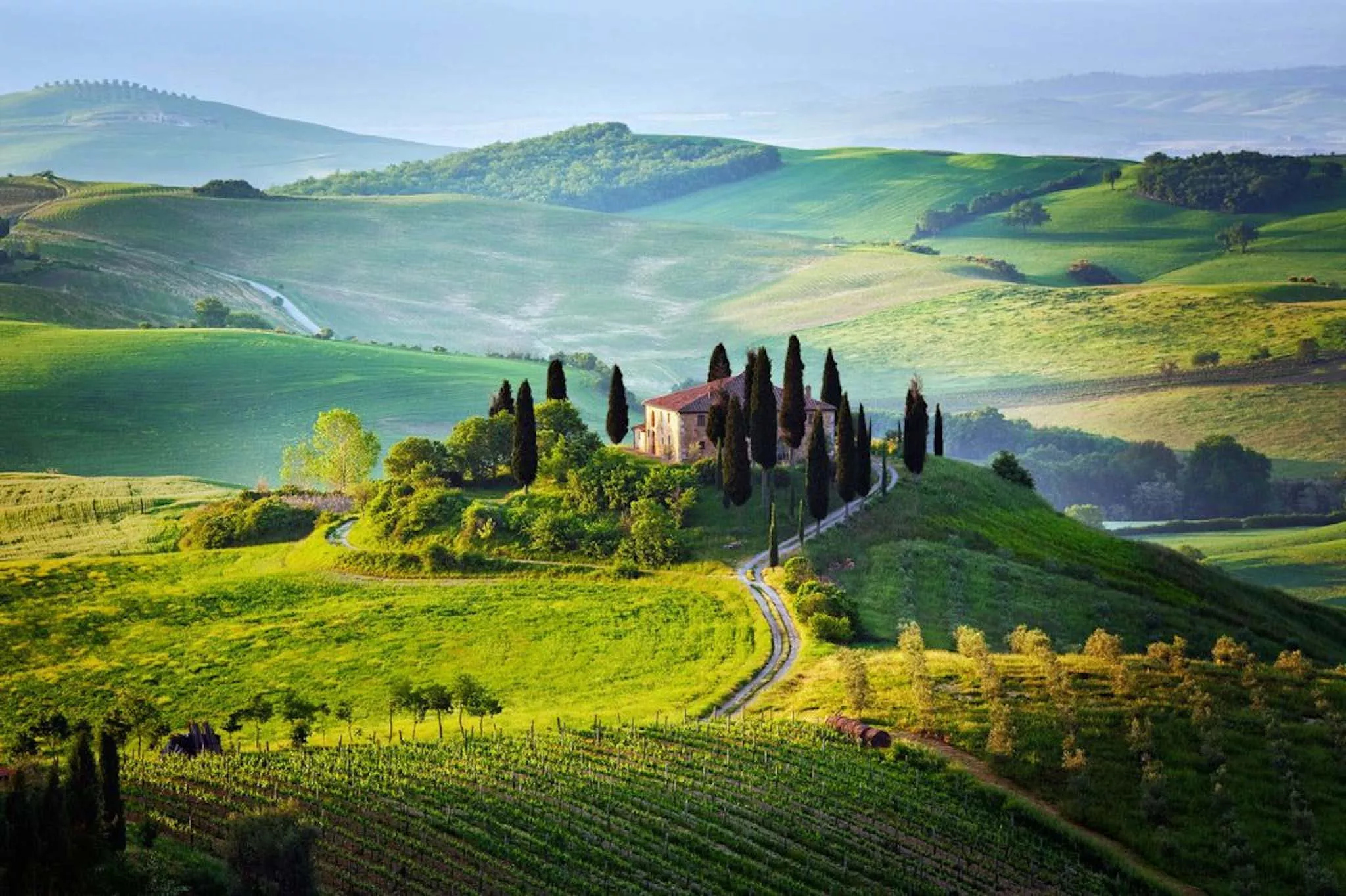- You have no products added in your Shopping Cart. 0
Vegetable tanning
Vegetable tanning - Tuscany

It is in the middle of the fascinating Tuscan landscape, between Pisa and Florence the noble art of vegetable tanning is still alive, one of the heritages of Tuscany, in this land rich in history, art and tradition in the so-called leather district the tanneries of the Consortium are based Genuine Italian vegetable tanned leather, vegetable tanning has distant origins begins in prehistoric times in Tuscany and after centuries it has reached perfection.
I show you some phases of the vegetable tanned leather production process, let's go into some departments where the famous cowhide is born.
The raw hides arrive in the tannery preserved in salt, the cutting is the first phase and is performed by master cutters who separate the hips, the rump and the shoulders of the animal skin, during the phases of soaking, calcination, depilation, the hides are immersed in large wooden drums where they are purified of salt and impurities brought back to their natural greasy state and deprived of hair.
Now they are ready for fleshing and splitting operations with which fat and meat residues are eliminated.
Again in the drums, the hides are washed to lower the pH and restore the optimal conditions for tanning with plant extracts.
With this operation the preparation cycle is closed and the leather is finally ready to be tanned with natural tannins.
Vegetable tanning is a long and complex process based on ancient recipes and master craftsmanship heirs of centuries-old experiences following with care and passion the slow process that leads the raw hides to become vegetable tanned leather, from quebracho the chestnut and the mimosa the tanning agents or tannins are extracted and it is precisely the tannins, powders extracted from trunks, fruits, leaves or roots of plants that transmit unmistakable properties and unique characteristics to the leather.
tannins for several days.
The tannins make vegetable tanned leather immediately distinguishable from other types of tanned leather, warm and bright shades, softness to the touch, resistance and the unmistakable scent of leather a scent of vegetable substances that smell of wood, dyeing and dyeing always take place in the drums the fattening which are intended to color and soften the skin.
Once the leathers have been removed from the drums, we move on to assisting with the pressing and shaving, operations that are used to remove excessive moisture and to give the leathers a homogeneous thickness, it is very important to know that every company jealously guards the recipe and the tanning sequence.
fat dyeing qualifying phases of vegetable tanning.
The experience of the master tanners in dosing the different ingredients and alternating these phases is fundamental to obtain different articles and constant quality of the leathers.
The setting in the wind is carried out with machines that in a single step perform three operations to remove a good part of the water from the leather, drying by squeezing, widening and spreading the leather, flattening the grain, to eliminate residual moisture the leathers are air dried attached to an air chain controlled temperature and humidity.
Staking follows to obtain flexible and soft leathers, now it's up to the definition, in addition to the classic cowhide known and requested all over the world, the tanneries of the consortium present collections enriched by a wide range of definitions, printed, screen-printed, hand-buffed, finished leathers sprayed and sanded, displacements, polished with amber all the result of research and craftsmanship.
Vegetable-tanned leather absorbs traces of your experience as it ages but no leather is the same as the other, and natural aging does not compromise the characteristics of resistance but rather gives the leather that antiquing that also personalizes the shades of color and represents proof that you have purchased a natural product.
Thus, thousands of vegetable tanned leathers leave Tuscany destined for the great international fashion houses, for the excellent Italian and foreign artisans for the production of bags, belts, shoes, wallets, furnishing accessories, saddlery items.
The products made of vegetable tanned leather are guaranteed by the quality mark.
The tanneries associated with the Consortium follow a strict technical production disciplinary guaranteeing traditions, high quality workmanship that respects man and nature.